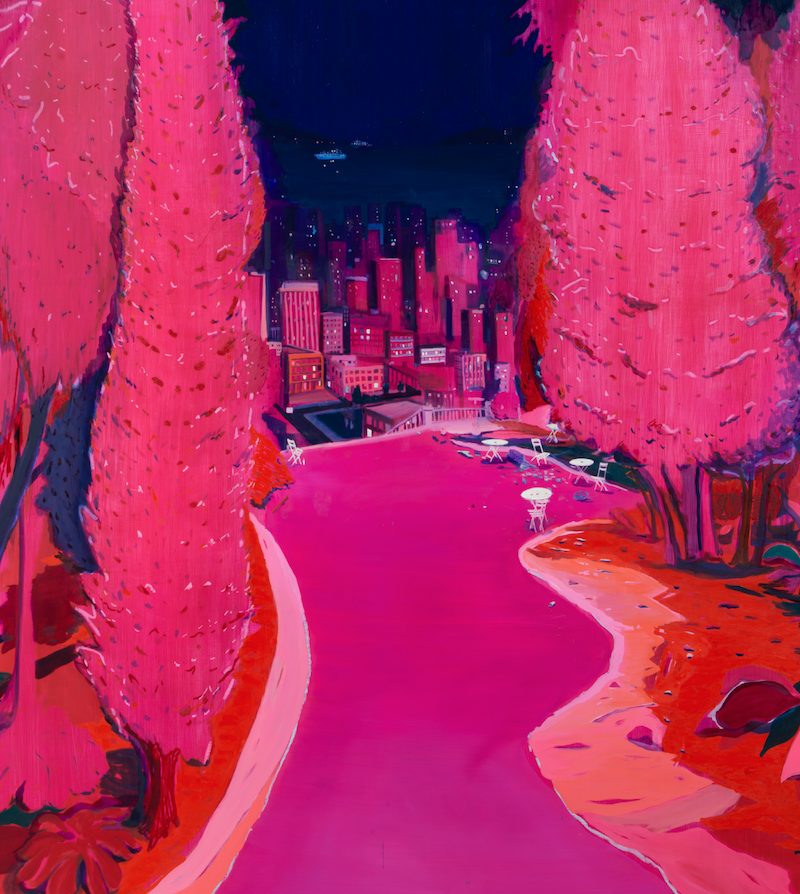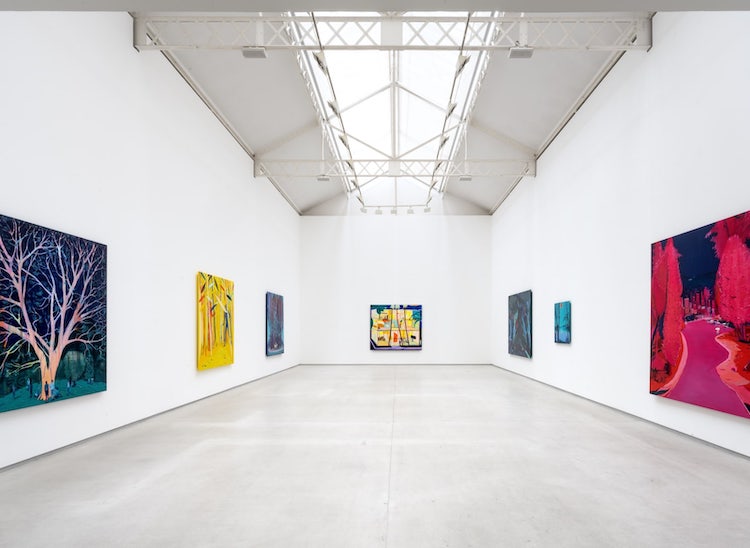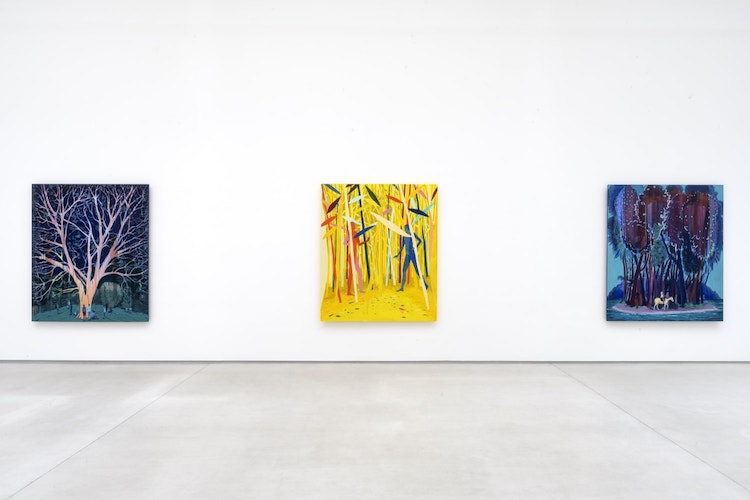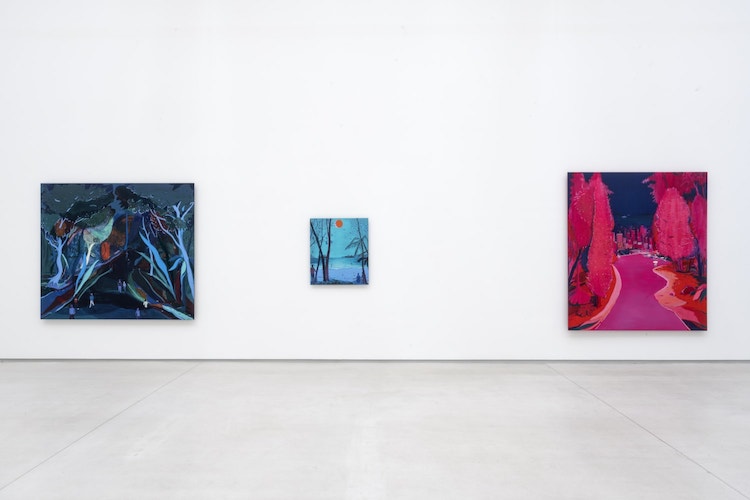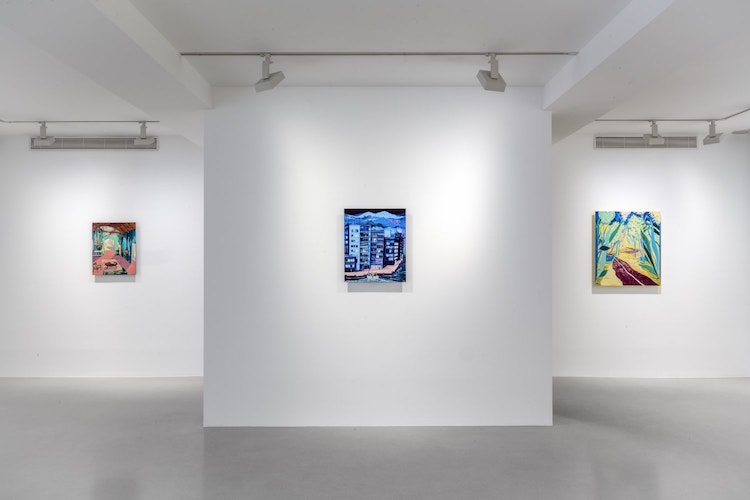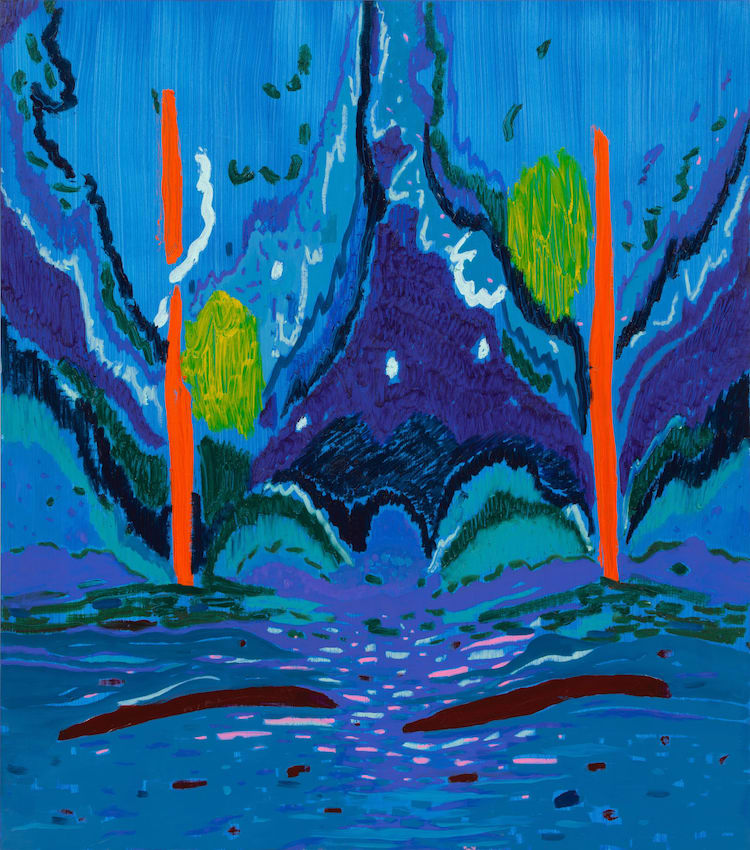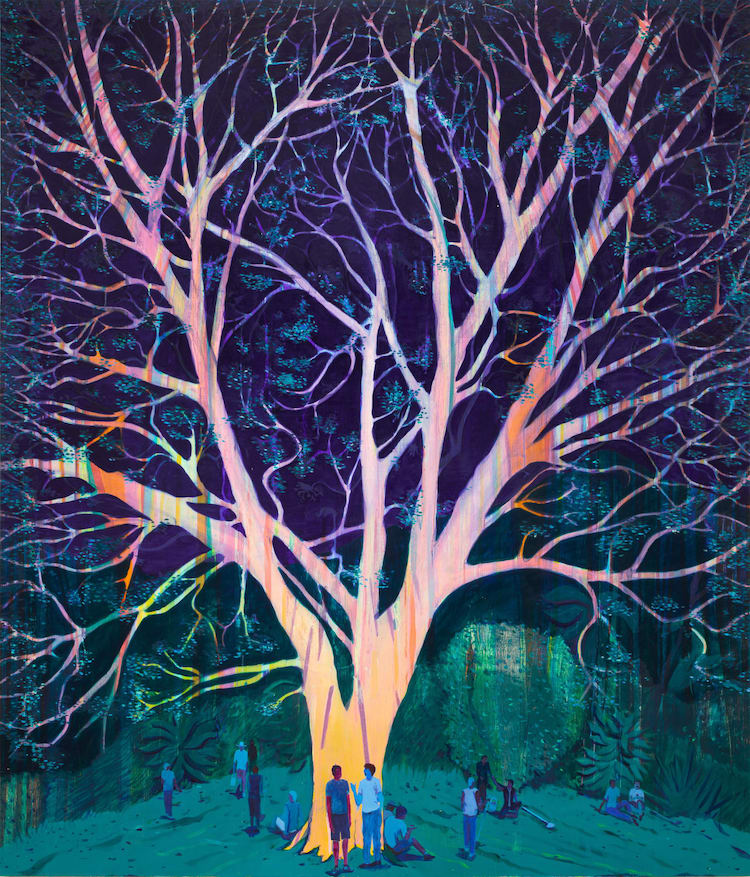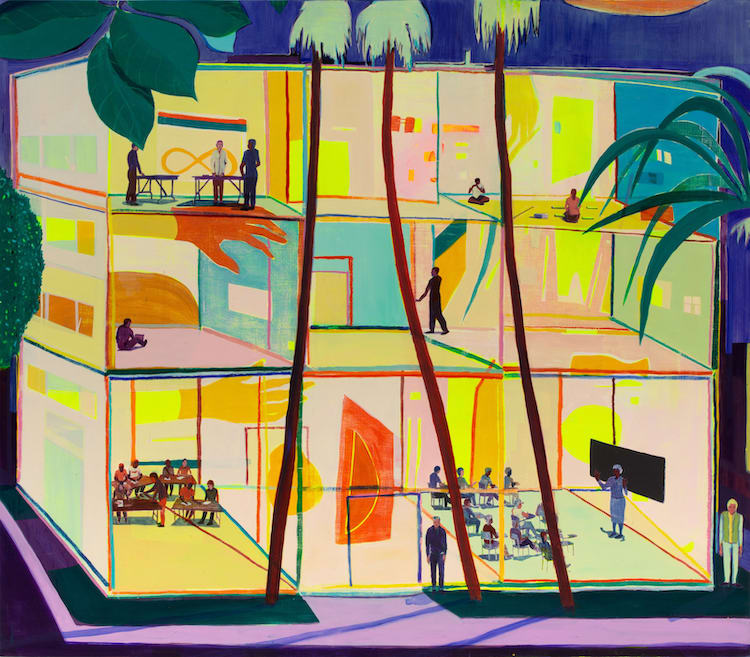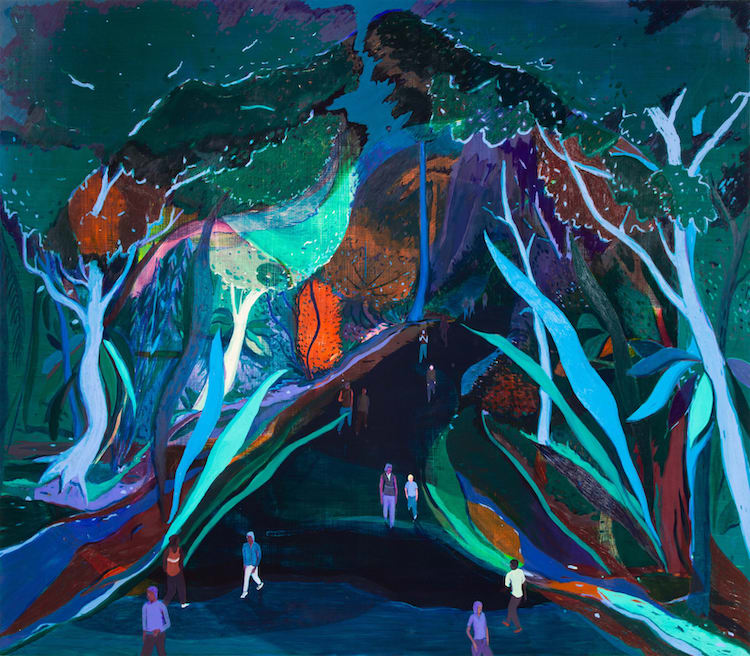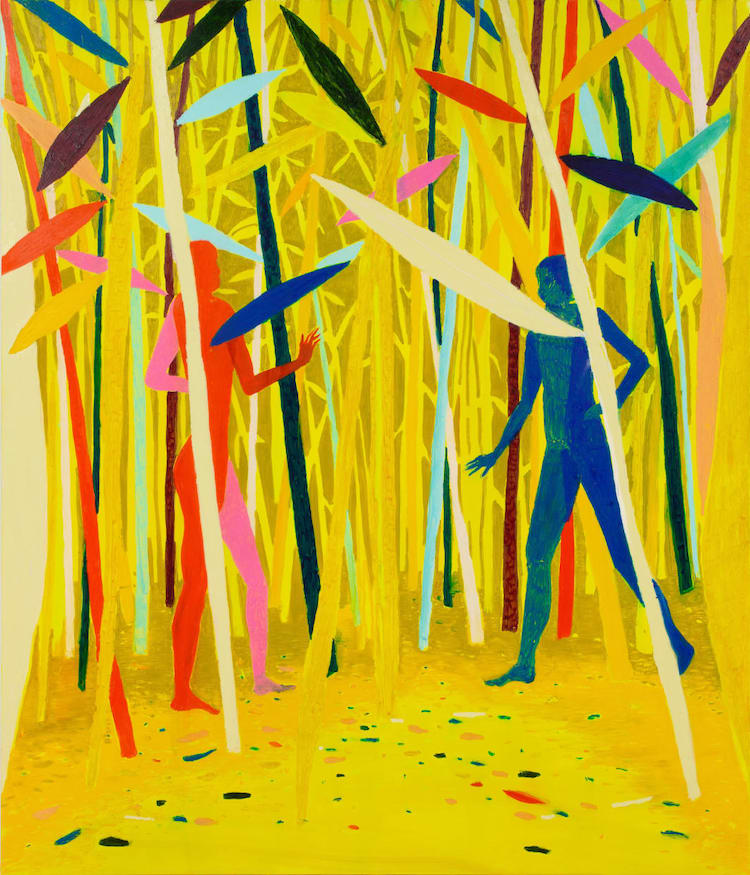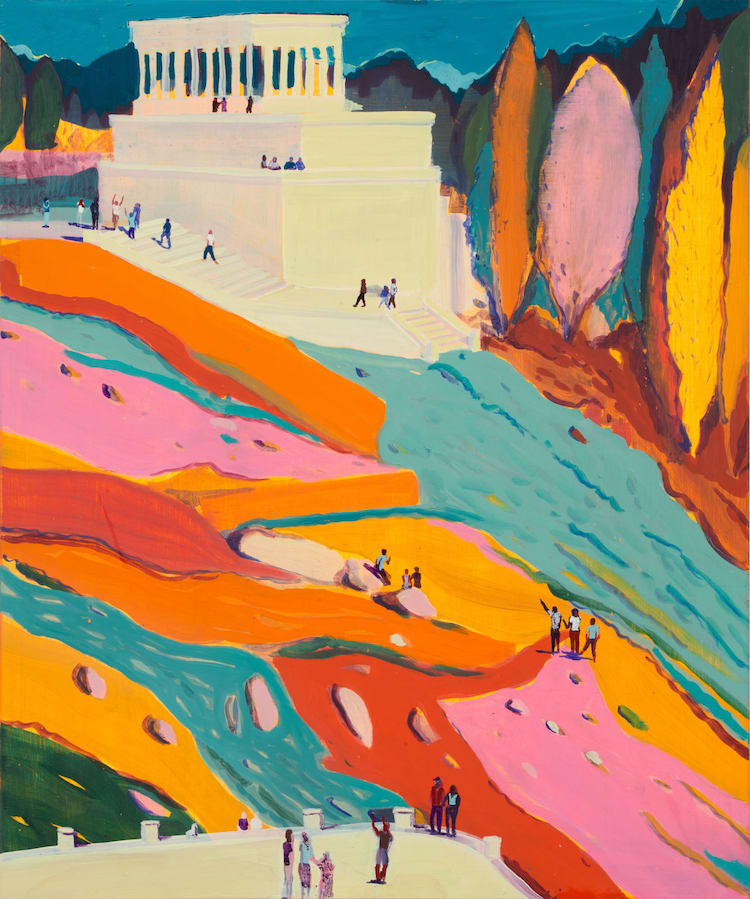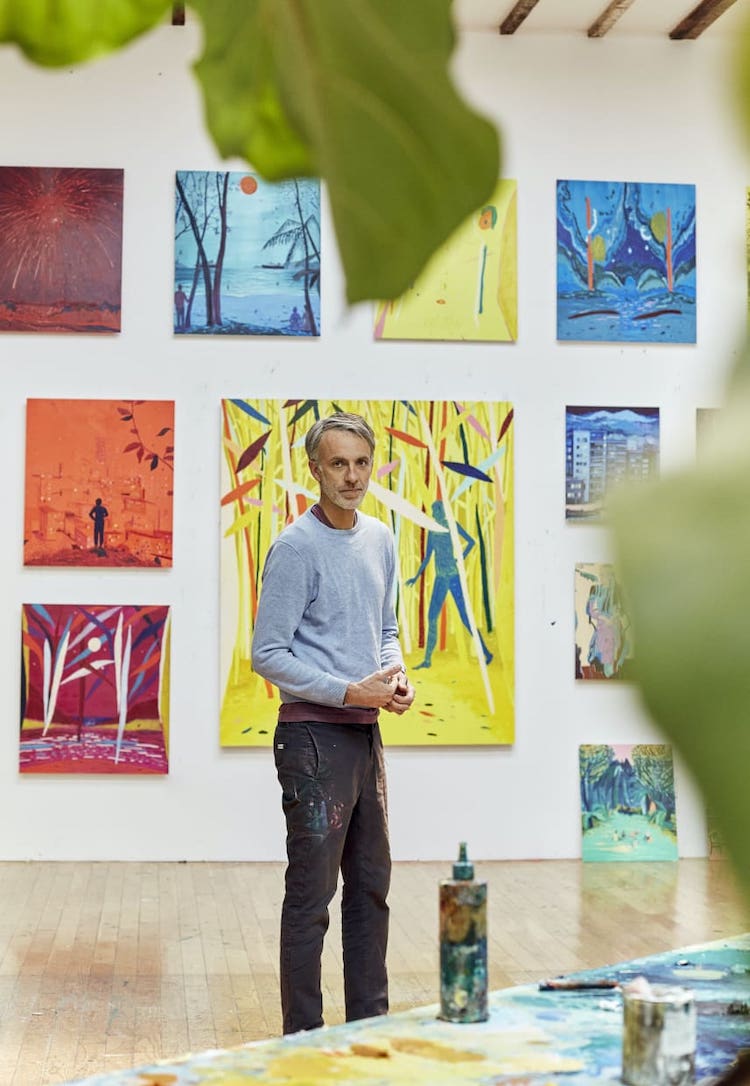I’ve been thinking a lot about the ocean in recent days. For some of us, the sea feels chaotic and disturbing, but for many, the crashing waves soothe and calm as the tide’s ebbs and flows confirm the constancy of earth. As we continue to process a tumultuous year of emotion and doubt, often aggravated by impatience, I’m comforted by the idea of the ocean being there, an immense, grand escape from a rudderless reality.

Jules de Balincourt, a great artist who has graced our cover and is one of the most celebrated contemporary painters, just opened a new body of work, There Are More Eyes Than Leaves On The Trees, with Galerie Thaddaeus Ropac in Paris this past week. The Brooklyn-based painter splits time between the mega-metropolis of NYC and the languid shores of Costa Rica, where surfing and the natural world begin to take shape in his paintings. This new series, made over the course of last year before the pandemic, addresses physical space and confinement. Characters appear almost fortified in their own rooms and areas, cut off from others, structured in a way where, despite access to social groups, are seemingly content in their own worlds. Even more abstract than in years past, figures are sometimes all together absent, attesting our desire to disappear or blend in within our surroundings; this coming from an artist known for his unique figurative paintings. 
As the gallery states, “The title of the exhibition, There are more eyes than leaves on the trees, derives from a vernacular Costa Rican proverb, which conveys the notion that as isolated as you may be, everyone is always aware of your doings, even in a small fishing village lost in the jungle. It also suggests the debate surrounding the human domination of nature in a world quickly undergoing ecological collapse
“I was curious to see what would arise when simply painting a painting – pushing painting away from its literal narrative quality,” de Balincourt said of the new show. “I like the idea of placing the viewer at these crossroads of painting, in which one’s emotive response hovers between rational realism or figuration, on the one hand, and the abstract subconscious or primitive on the other. By presenting a duality between these two ways of thinking and being, these paintings allow the viewer to travel from the conscious and recognisable into the mysterious and unknown.” As we embark on our own unknown futures, there is something restorative in the flush of colors, the stillness of the scenes and a return to nature. —Evan Pricco



